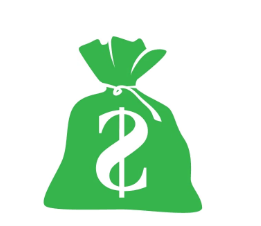Blog

Preventative Drain Maintenance: Pros and Cons
Preventative drain maintenance prevents clogs and associated issues, such as overflows. While you likely know that you don’t want your drains to overflow, it can be challenging to tell whether preventative drain maintenance is worth the investment.
At State Chemical, we develop, manufacture, and distribute chemicals that prevent drain issues. When we put these chemicals down a customer’s drain regularly, we help that customer prevent most drain problems.
We recognize that like everything in life, there are pros and cons to preventative drain maintenance. This article will review the pros and cons we have learned through our 112 years of experience.
Pro: Preventative Drain Maintenance Prevents Cast Iron Pipes from Rotting
Old buildings often contain cast iron pipes. When cast iron pipes have a clog, that clog can deteriorate the pipe. The fats, oils, and greases (“FOGs”) in the clog cause the cast iron to rust. The more the pipe rusts, the worse the pipe structure becomes. In a worst-case scenario, the FOGs can rust a hole into the pipe.
Thus, for buildings containing cast iron pipes, a major pro of preventative drain maintenance is that it prevents the pipes from rusting and deteriorating. The preventative drain maintenance prevents clogs that would have otherwise adversely impacted the pipe structure. Preventative drain maintenance will help maintain the integrity of a cast iron pipe.
However, this pro does not apply to pipes made of PVC. PVC pipes are found in most new buildings. While having a clog in a PVC pipe can lead to other issues, a PVC pipe will not deteriorate from a clog.

Pro: Preventative Drain Maintenance Prevents Most Clogs and Overflows
Proactive drain maintenance prevents most clogs and their associated issues, such as overflows, malodors, and drain flies. Preventative drain maintenance will help avoid most worst-case scenarios. For example, dialysis centers contain drains next to patient chairs and beds. Dialysis treatment requires drains to dispose of bodily fluids and the dialysate used in dialysis treatment.
One dialysis center used preventative drain maintenance to avoid drain flies. However, after remodeling, they felt that such preventative drain maintenance was unnecessary. Their drains quickly clogged and attracted drain flies. Patients were swarmed with drain flies during their treatments. Patients who were sitting for dialysis treatment had to fight off drain flies each time they came in for treatment. The nurses and patients were miserable.
They cleared the clog that attracted the drain flies and then went back to using preventative drain maintenance. Once they started regular preventative maintenance, they never again faced a drain fly issue.
Con: Preventative Drain Maintenance Cannot Stop All Clogs
While preventative drain maintenance can prevent most clogs, it cannot prevent all of them. There are certain items that, if put down the drain, will cause the drain to clog, even if you are using preventative maintenance. For example, if someone puts a rag down the drain, that rag will cause the drain to clog. This is often seen in senior living communities where individuals will flush diapers and wipes down the toilet. These diapers and wipes can cause a clog, even if the drain lines are being treated.

Con: Preventative Drain Maintenance Involves an Upfront Cost
Preventative drain maintenance involves an upfront cost. You must pay for the chemicals and equipment necessary to treat your drains. This cost depends on various factors, such as the chemicals you use, the amount of chemicals required to treat your drain, and the number of drains you are treating.
Pro: Preventative Drain Maintenance Can Save Money in the Long Run
Preventative drain maintenance can be thought of as insurance. Like insurance, while you must pay for preventative drain maintenance upfront, it often saves you money in the long term.
To determine if preventative drain maintenance will save you money, we recommend comparing the cost of preventative maintenance with the cost of using reactive drain openers to clear clogs and the cost of issues if something goes wrong with your drains.
For example, in a senior community in Chicago that was not using preventative drain maintenance, someone threw pizza dough down the drain. This pizza dough clogged the drain line and backed up the drain system. The senior community had to call an emergency plumber. The plumber cost them $3,000. For that senior community, preventative drain maintenance could have prevented this issue and saved them the call to the emergency plumber.

In Summary: Preventative Drain Maintenance Has Pros and Cons
Preventative drain maintenance can preserve the integrity of cast iron pipes, prevent clogs and their associated issues, and save you money in the long term. On the other hand, preventative drain maintenance involves an upfront cost and cannot prevent all clogs.
Many individuals have concerns about using preventative drain maintenance. If you have resolved these concerns and decided to use proactive drain care, your next step is to choose which preventative drain product is right for you.








